Cranbuck
Buckwheat sourdough with dried cranberries
This is a break from the decadence of Bro-caccia, returning us to a basic sourdough with dried cranberries and nutritious buckwheat. It’s a favorite and can also be found in my book.
Thanks for reading and happy baking! Martin
Ten years ago I was in Italy for a bread competition (SIGEP). I was there with JT Tredgold and two other teammates as part of Team USA, baking with (against?) bakers from across the globe. It was joyful. I returned home carrying a bowlful of stories, entertaining anecdotes, and inspiration. Think: rigged competition, eating raw sourdough culture at Heathrow airport, the sad tale of a broken rooster-themed bread statue, and ideas for new bread flavors and shapes. Here’s the story of one of those ideas: Cranbuck.
Among the breads that JT made for our team competition was a loaf with a portion of teff flour that he mixed with boiling water before inoculating it with sourdough culture. The mixture ripened overnight, then, on day two, he added dried cranberries to make a delicious cranberry-teff loaf. Piquant, slightly sweet, and earthy, it was unlike anything I’d tasted.
When I got home I thought of JT’s loaf as a way to use buckwheat. I tweaked some percentages, swapped out the teff, and changed hydration, cranberry quantity, shape, and so forth but, with a head start from his idea, the first iteration of my cranberry-buckwheat (“Cranbuck”) landed as a rare lead-off home run. Here it is.
Cranbuck
Whole buckwheat flour, 65g
Water, boiling, 52g
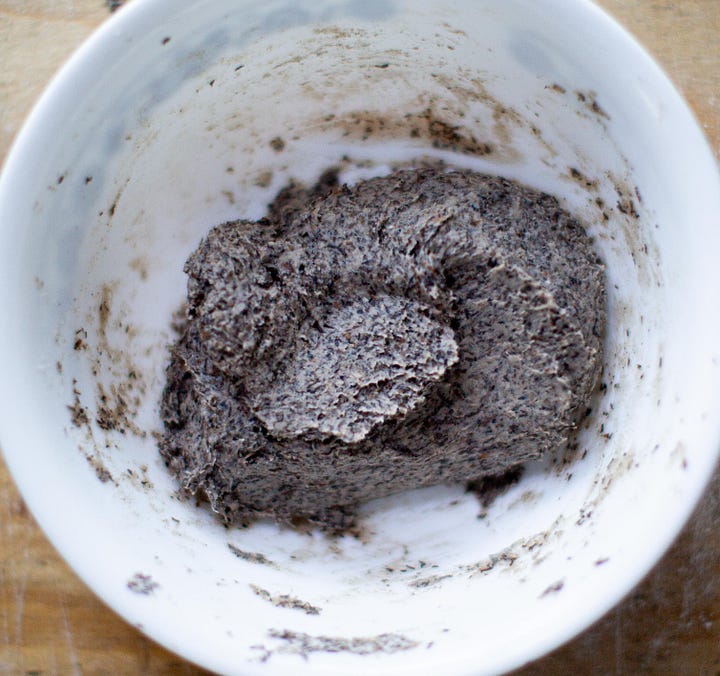
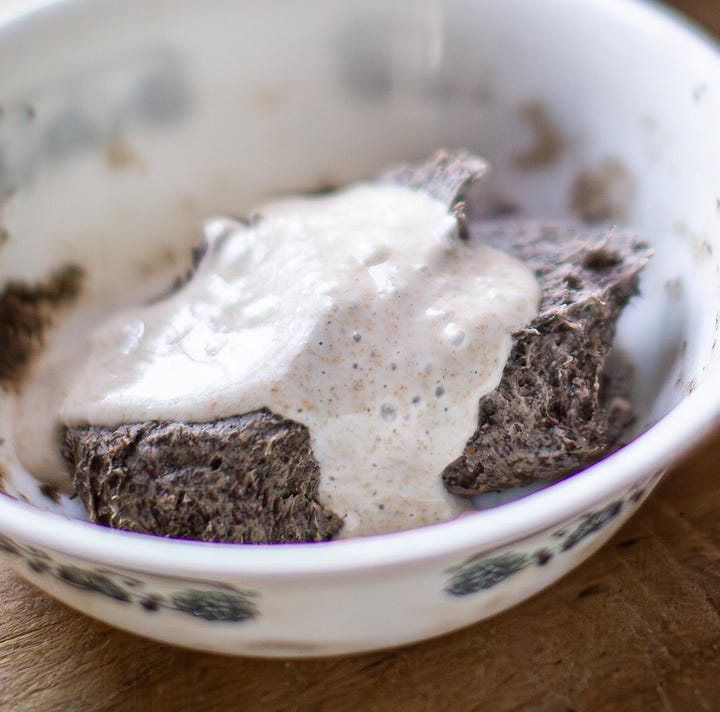
In a medium bowl combine the boiling water and the buckwheat flour. Stir to combine. Once the mixture has cooled slightly, knead briefly to fully smooth the mixture. *Buckwheat flour milling and the resulting absorption varies widely by producer. If the mixture is overly stiff, add a little additional water until you reach the consistency of firm Play-doh. When I mill the buckwheat I find that the hydration is perfect as written. When I use a national brand (like Bob’s) I add an additional 10g or so of water to get the consistency that I want.
Sourdough culture, 13g
Cool at room temperature for 10 to 15 minutes, then stir in the sourdough culture and knead briefly to fully incorporate. Cover with a lid and set at room temperature for 12 to 16 hours.
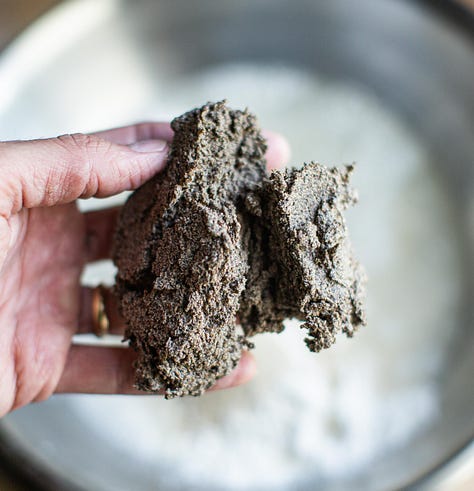
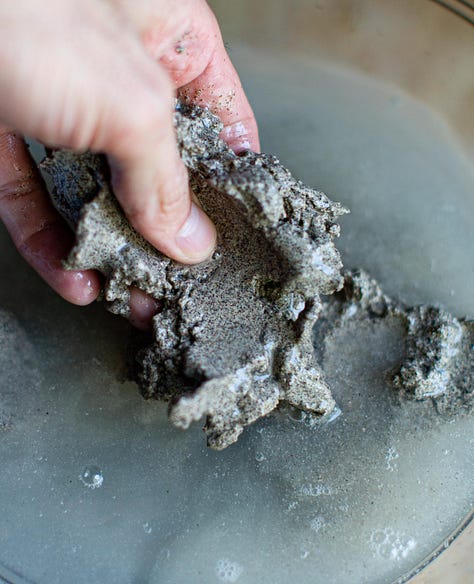
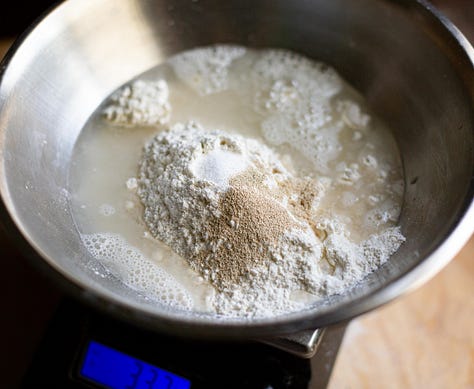
Water, tepid, 336g
Buckwheat preferment, all
All-purpose flour, 432g
Salt, fine, 10g
Yeast, dry instant, 3g
In a large mixing bowl combine the final dough water and buckwheat preferment. Mix with your hands until the preferment is broken up in the water, then add the flour, salt and yeast. Stir until the dough forms a shaggy mass then use a plastic scraper, folding and pressing until the mass is homogenous.
Cranberries, dried, sweetened, coarsely chopped, 89g
Place the cranberries on top of the mixed dough and fold briefly to begin incorporation. *The dough doesn't need to be homogenous; the cranberries will fully incorporate during folding.
Scrape down the sides of the mixing bowl and allow to rise, covered, for 2 ½ hours at room temperature, folding as directed below.
Perform a bowl fold after 20, 40, and 60, and 80 minutes then leave untouched until the divide. (I’ll put a sample schedule below for clarity.)
As you perform each series of folds, you'll begin to notice that the dough becomes smoother, stronger, and more cohesive.
Divide the dough into 2 equal pieces weighing roughly 500g each. Preshape as rounds. Cover and rest for 15 minutes.
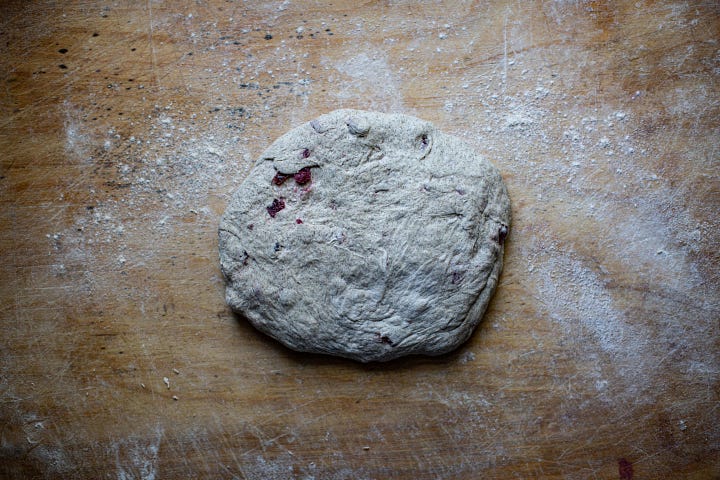
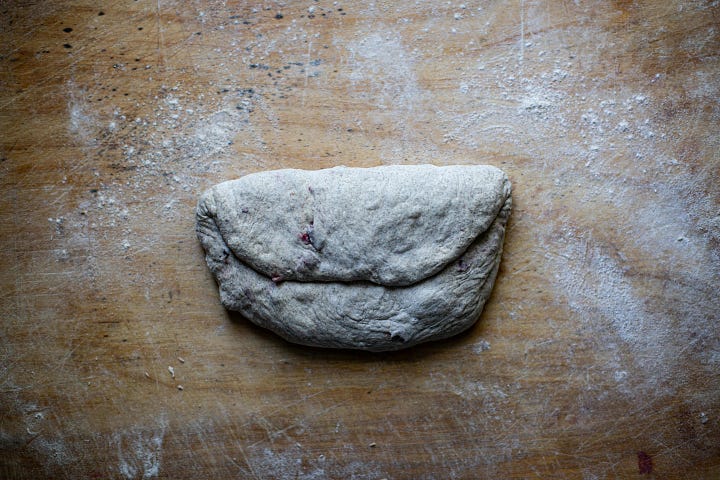
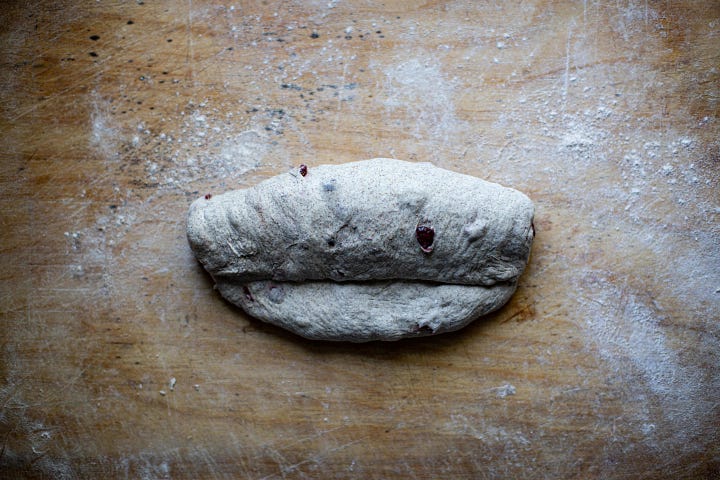

Shape as bâtards roughly 10” to 18” long (the range is your choice — shorter and stubbier or longer and more streamlined) and place on a floured couche or baker's linen. Pleat the couche between the loaves to support their sides as they rise. If desired, add a poppy seed crust by rolling the shaped loaves first across a wet towel then through a bed of poppy seeds.

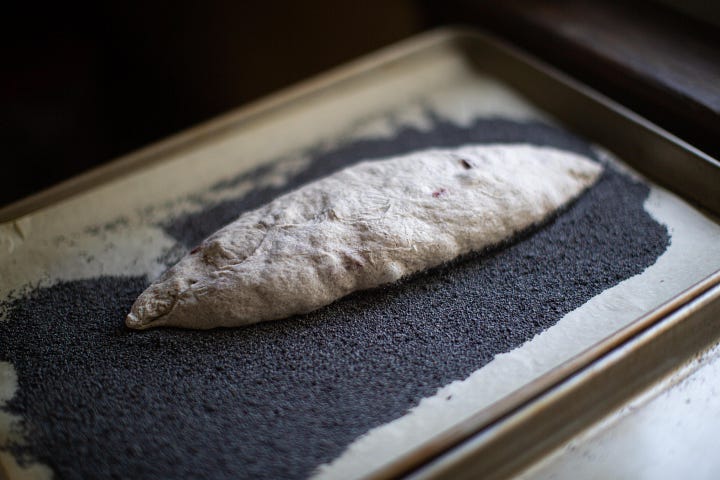
*In the finished shots you’ll see that I applied a poppyseed crust then, right before baking, added a stencil. The brief story on the stencil is that I bought a piece of radiator screen from a hardware store and bent it into a semi-circular form after cutting it with wire snips to an appropriate size. I like the look but it’s not necessary, the loaves are equally delicious without it. If you do decide to pursue it, I recommend proofing the loaves seam-side-down to keep flour off the top of the loaf. That will aid the contrast between the white flour used for the stencil and the black poppyseeds.
Cover and proof for 50 to 60 minutes at room temperature.
While the loaves proof preheat the oven to 475˚F with a baking stone and steaming system in place. Transfer the loaves to parchment or a baker's peel for loading.
Score the bread prior to loading and slide the loaves onto the preheated baking stone.
Bake with steam for 22 to 25 minutes. After 15 minutes, rotate the loaves if necessary.
At 22 to 25 minutes the loaves should be well-colored. Turn off the oven and prop open the door a few inches, allowing the loaves to dry for an additional 10 minutes.
Sample schedule:
12:00: Mix
12:20: Fold
12:40: Fold
1:00: Fold
1:20: Fold
2:30: Divide and preshape
2:45: Shape
3:45: Bake
Thanks again for reading. Enjoy the bread!
Martin

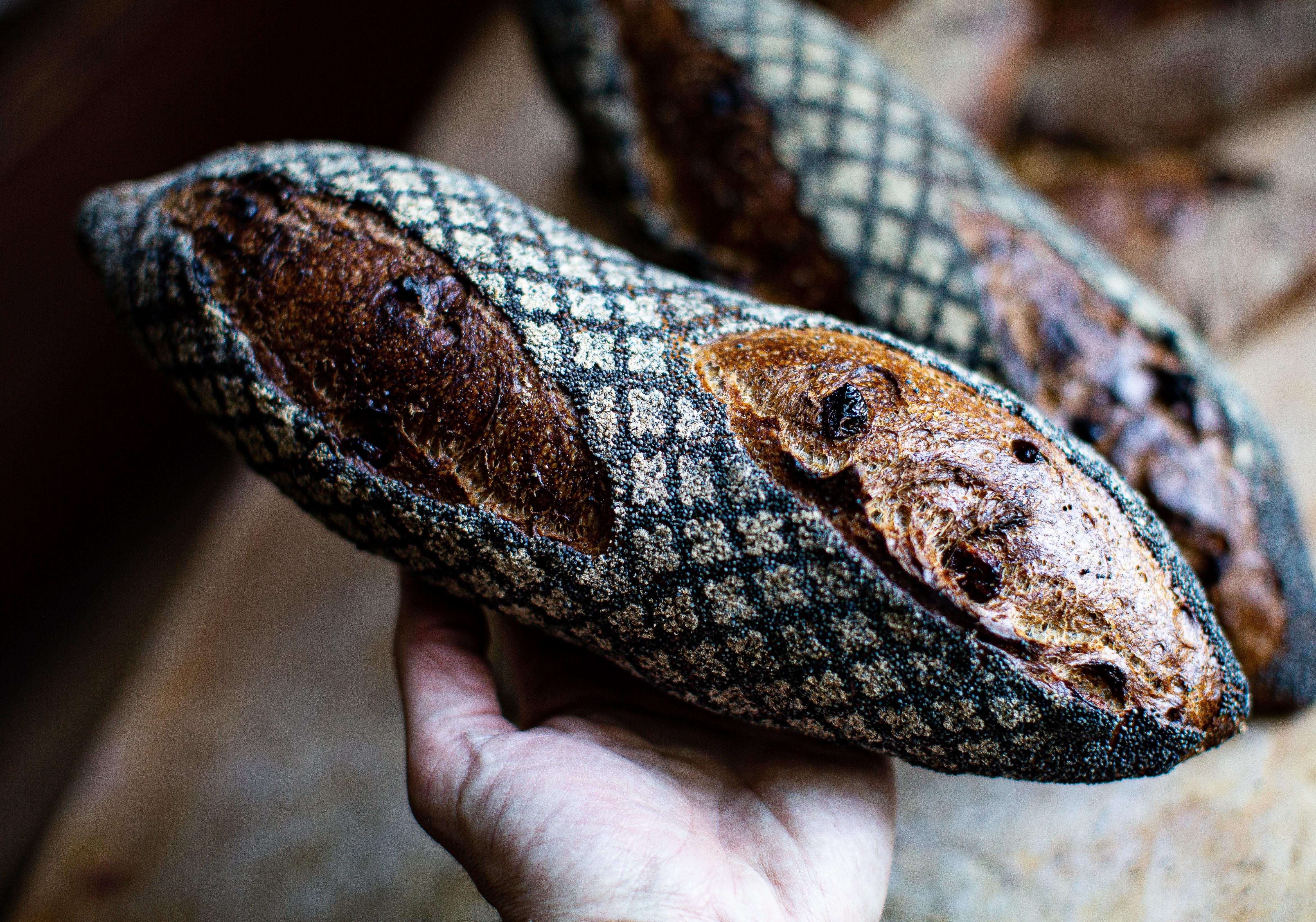
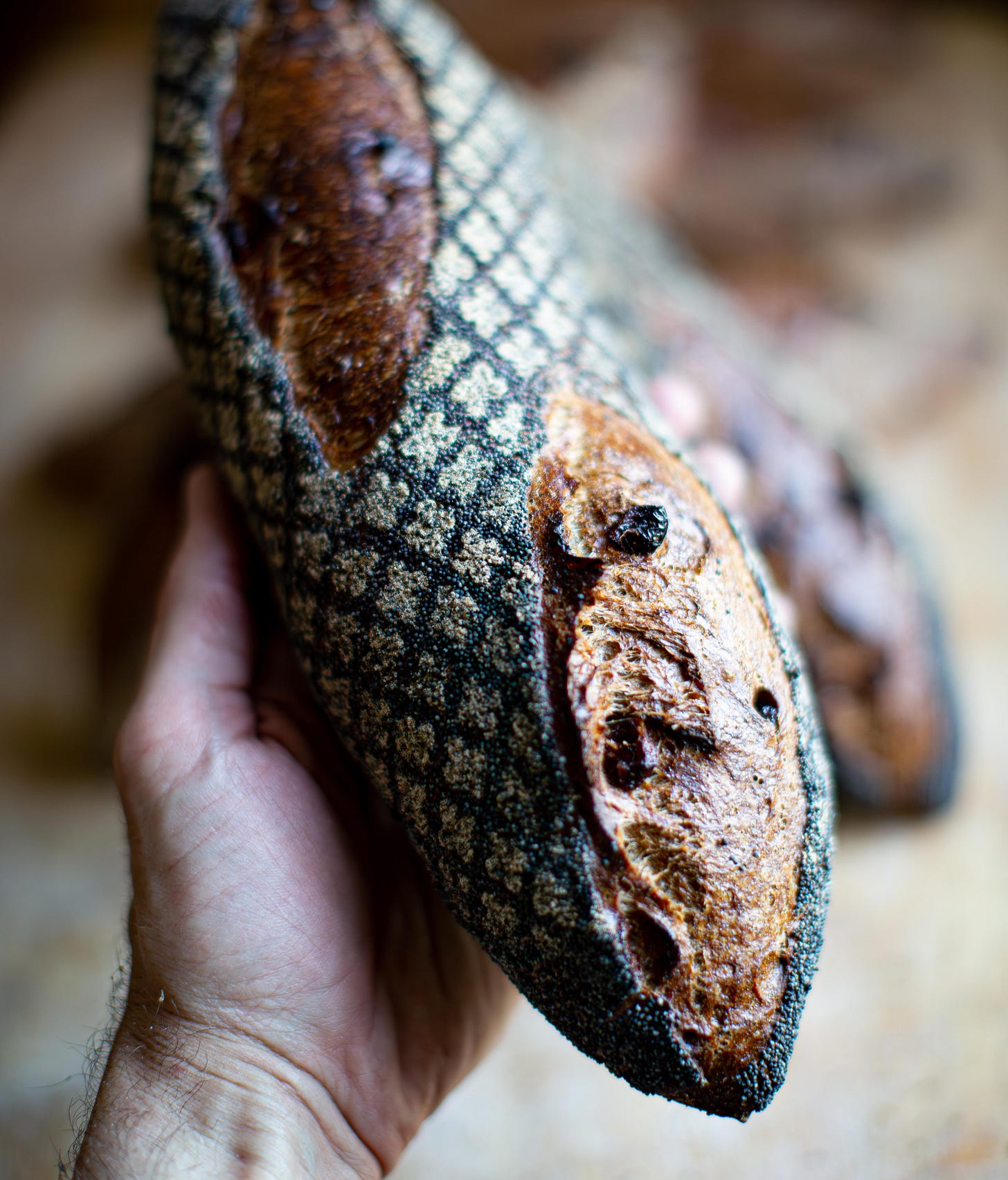
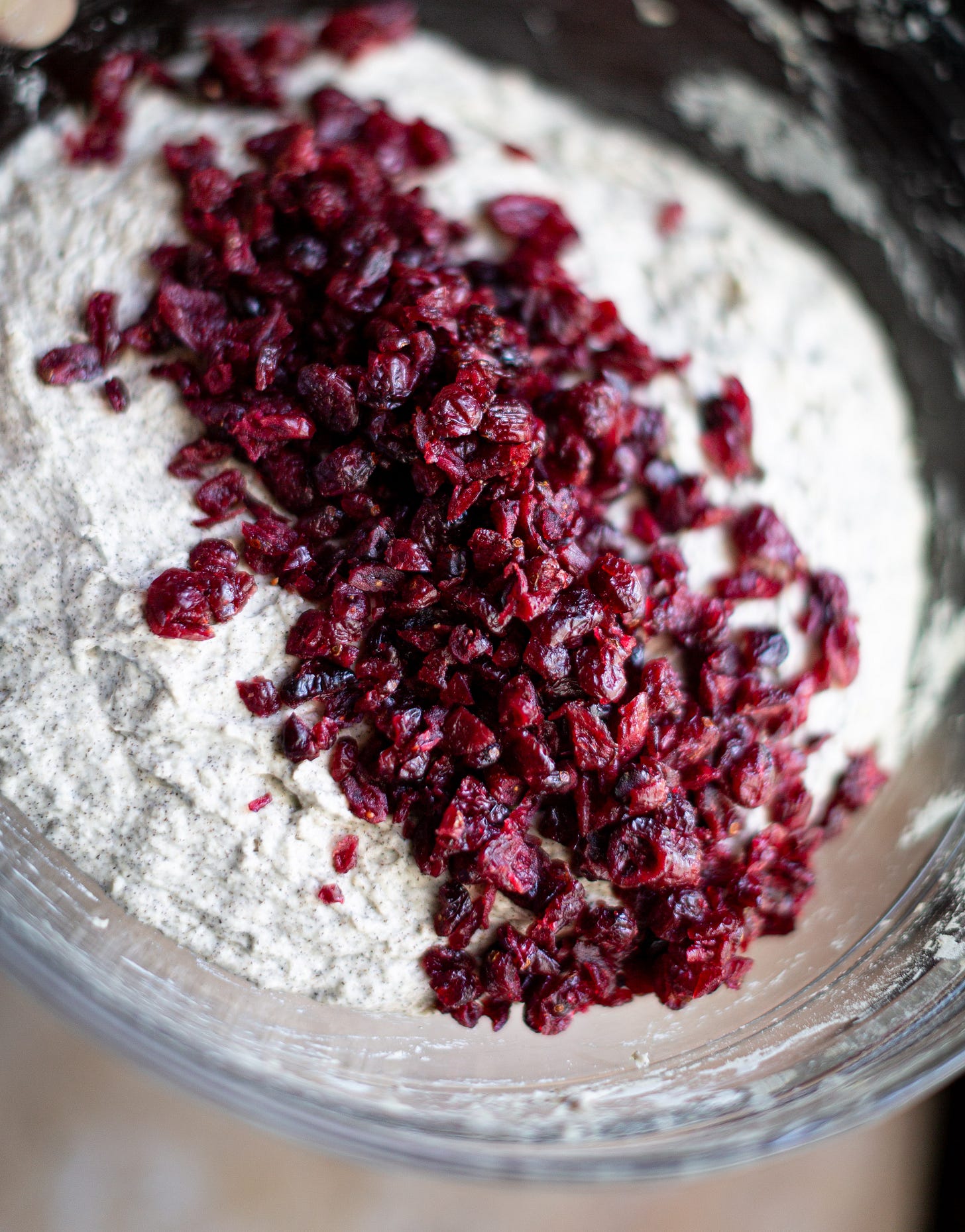
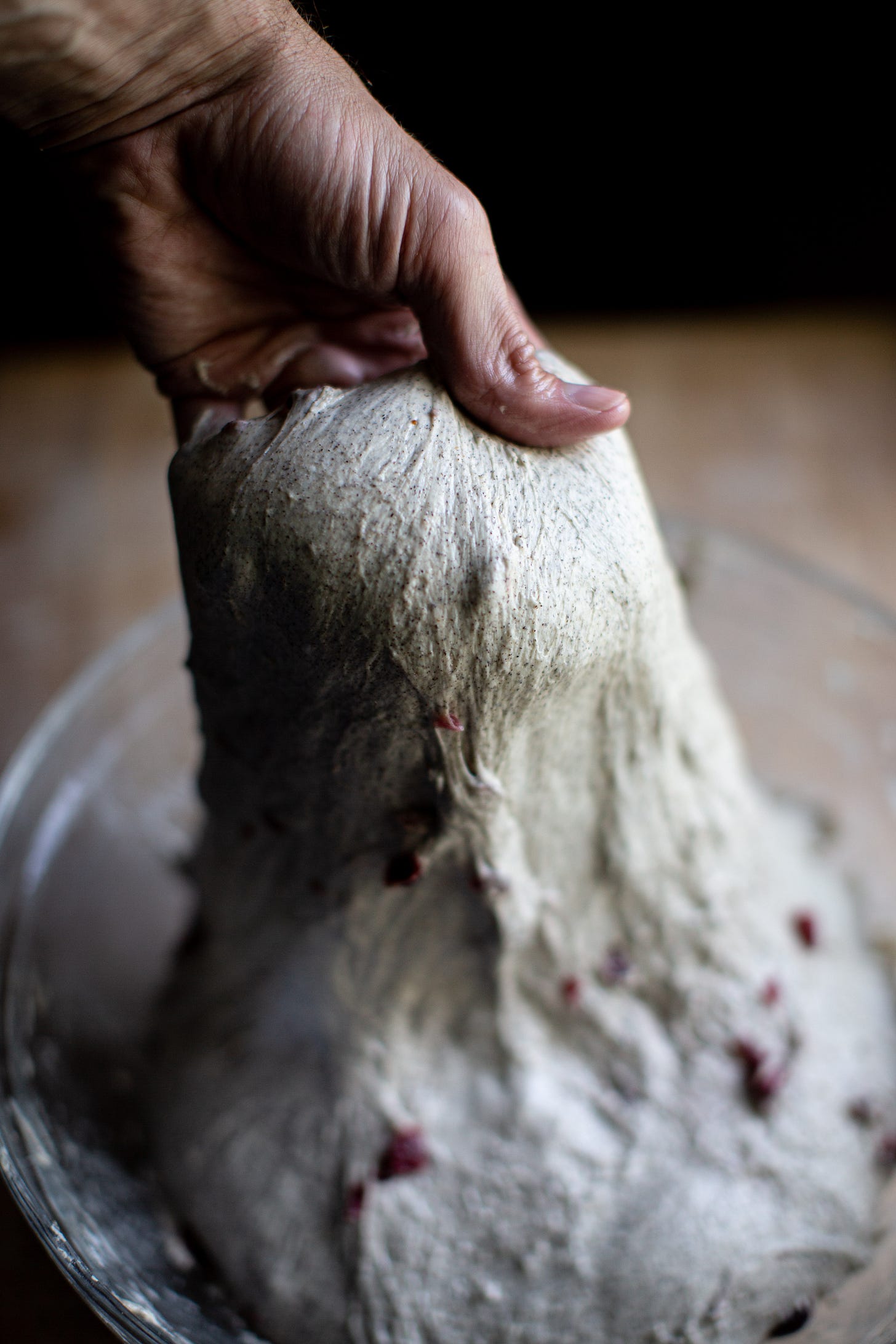
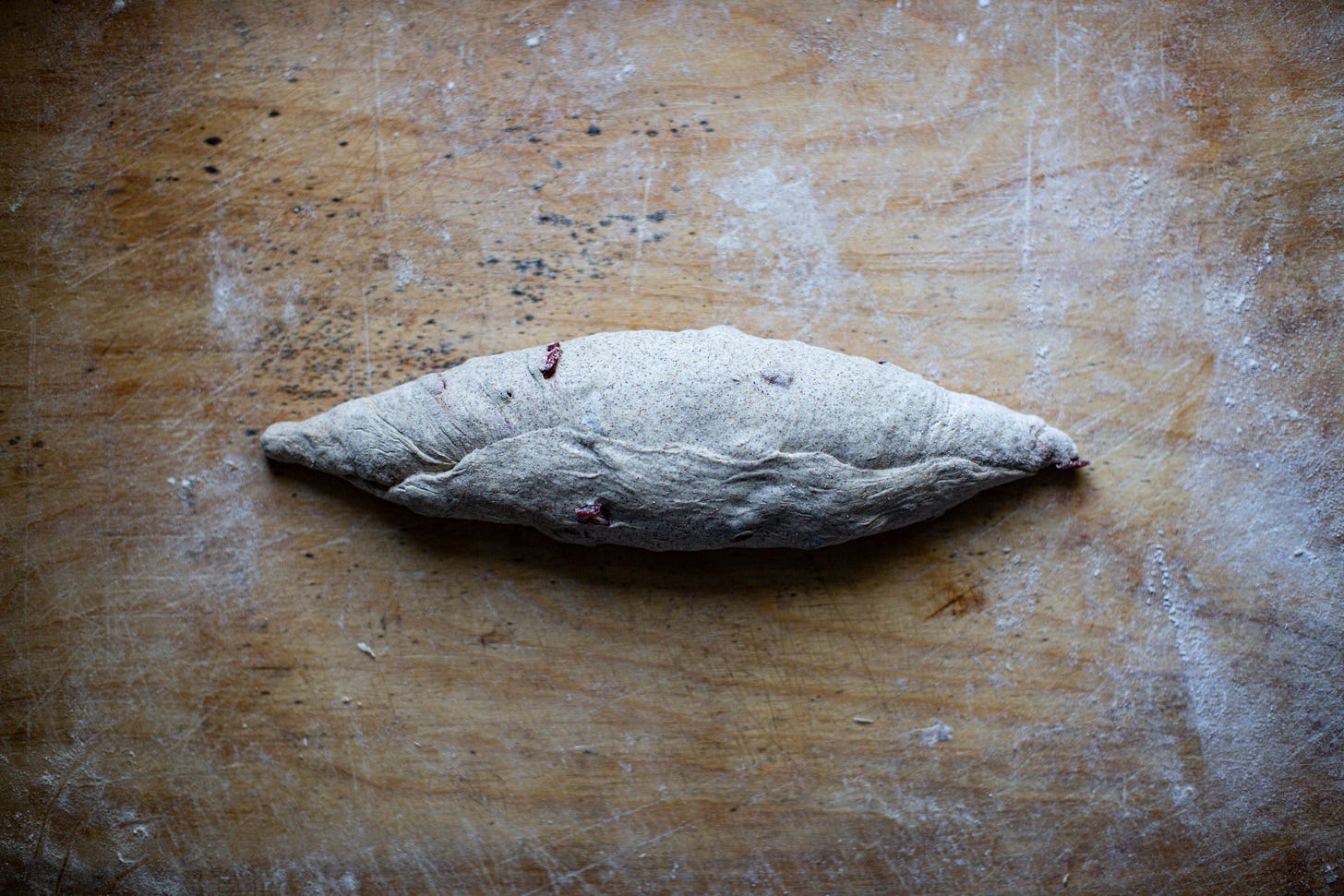
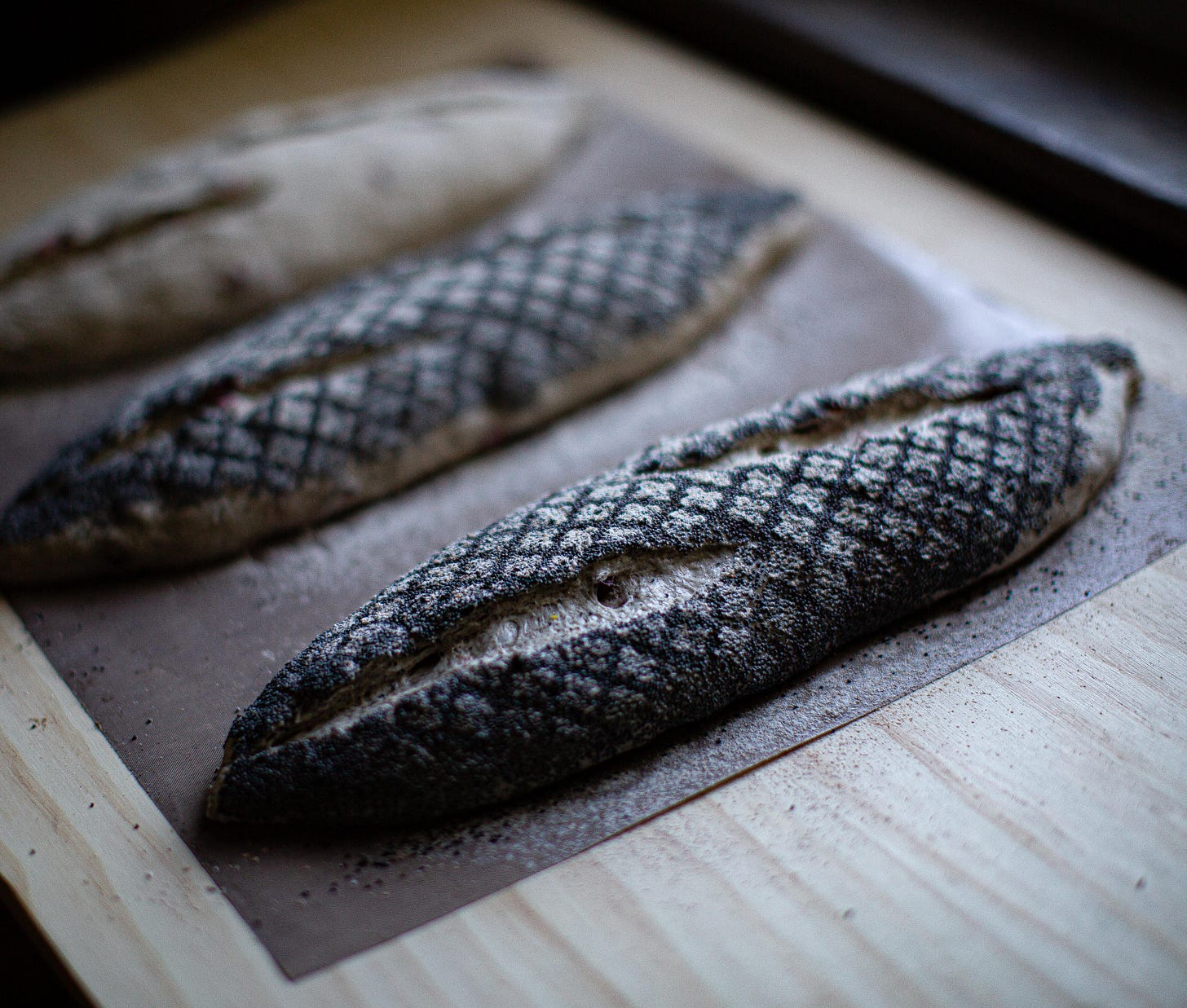
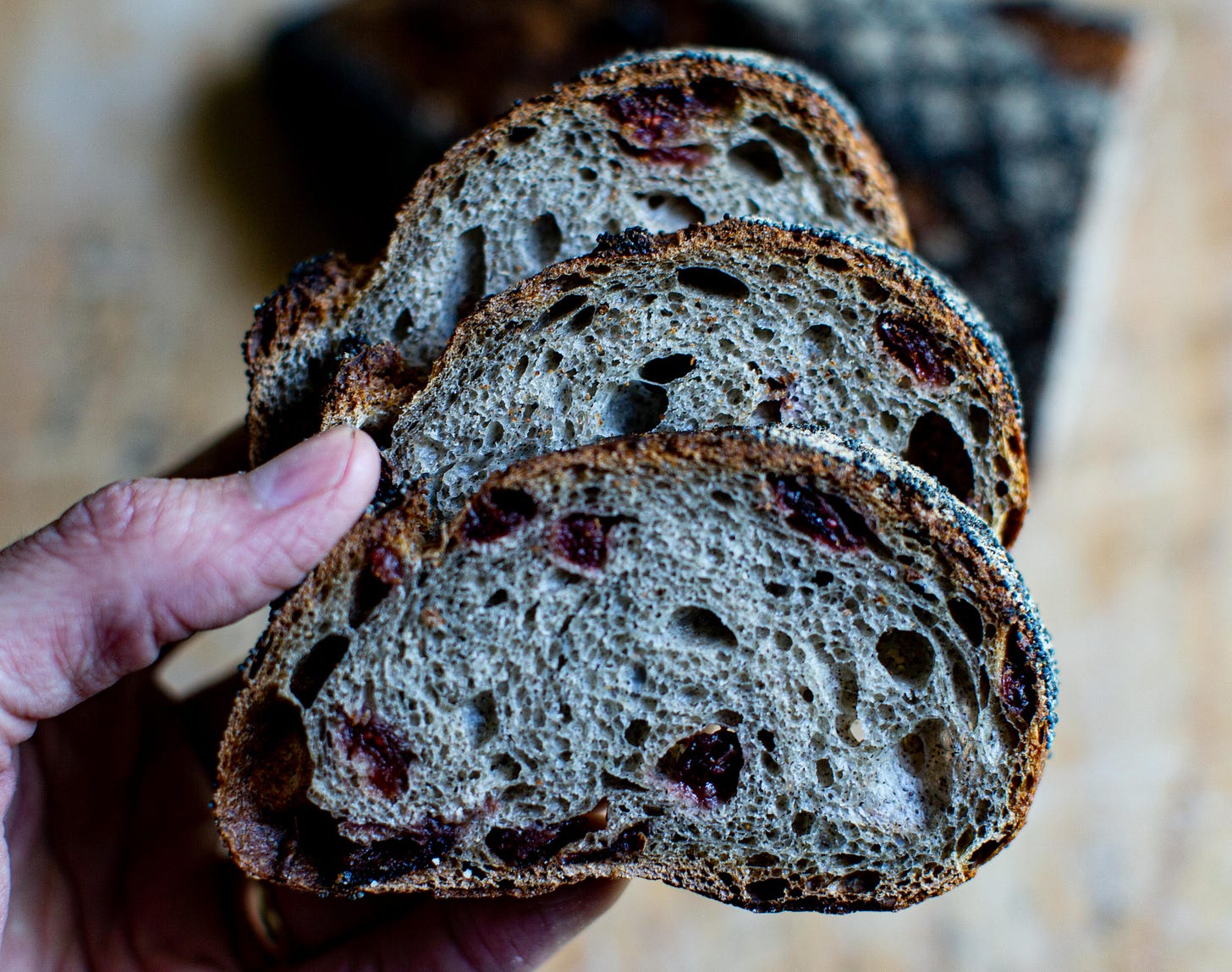
What's the total bake time? 22-25 (with steam) and then oven off if well browned to prop open for 10? Or additional 22 after opening and allowing steam to escape? Thanks!
Looks wonderful, can’t wait to try it! Question: for the preferment, should I use ripe or unfed sourdough culture?